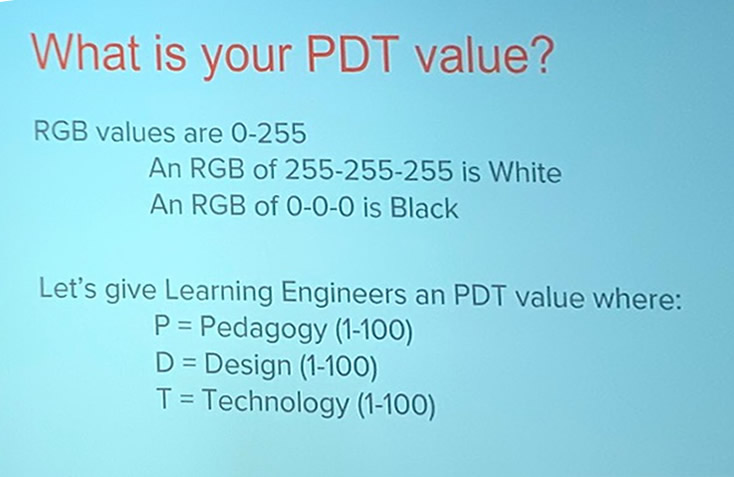With the rapid spread of Covid-19 (aka “the Coronavirus” in shorthand for now), there has been an explosion of discussions about preparing for quarantines and societal closures of various kinds. Among these discussions are moving conferences, courses, and even entire institutions online. I have been tweeting about this for a few days, so I wanted to collect and expand some of my thoughts on this topic.
Since I have a Masters in Instructional Design and a Ph.D. in Learning Technologies, we spent many assignments in courses for both degrees discussing various benefits and pitfalls of online learning, and yes, switching to online in the case of an emergency was frequently covered. It’s a complicated and problematic idea, so this will be a bit dark and complex / rambling post to make.
First of all, let me start off by stating that no matter how well you plan, switching to online will be more chaotic and hard than you can imagine, and it will cause greater damage to disadvantaged students than you will probably notice. Your first and foremost duty is to consider your disadvantaged learners first, and to work on navigating chaos rather than trying to stop it. Because you won’t avoid chaos. Remember – it is called DISASTER preparedness for a reason.
Many disaster preparedness plans I have seen, as well as many conference and institutional reactions to Covid-19, seem to only focus on able-bodied younger people that are not older, immuno-compromised, living with those that are older or immuno-compromised, already affected by food insecurity, homeless or on the edge of homelessness, affected by digital redlining, dealing with disability, held back by systemic discrimination and intersectionality, and so on. The reactions are only taking into account young able-bodied people living with other young able-bodied people, with maybe a link to an external resource that mentions everyone else (occasionally in passing). This is not going to cut it. Please keep your entire population in mind, not just those that will probably be okay no matter what you do.
Next, you need to realize that just because a conference or university can pivot to online, there are still institutional / organizational barriers to the overall idea of online. Some just won’t pivot because they are against online in general. If an institution does not allow remote work options, they probably do so for reasons that other institutions that do so have already dealt with. Its usually an institutional preference to be against remote work at this point, so that will likely carry over to online courses as well. Therefore, don’t assume some big switch will happen in those situations. Besides, how will institutions switch courses over to online if they don’t already have the procedures in place for their employees to go online?
Where I work for my day job, we already allow remote work, and already have a robust array of online courses. We have also been providing LMS shells for every course section, to be utilized even in on-campus courses. The structure is already there for the switch. Yes, I know LMSs are not hugely popular right now – I’m with you on that. But the important issue is that there is a space online there already for every class. It could be in WordPress blogs or many other tools for all that it matters.
what Matt said. :-)
I'm the Queen of Asynchrony.
also: super-flexible scheduling so students can arrange classwork based on available days/times, and also with clear, easy recovery for missing work.
meanwhile, we're connected thru a blog network… and networks are very flexible! https://t.co/Bf8c2ehOc4— Laura Gibbs (@OnlineCrsLady) March 4, 2020
But I guess we should talk first about how there are different types of disasters at different levels. There aren’t really any hard lines between these categories (I kind of made them up on the spot)… but in general, you see a few different kinds (and probably more than these):
- Individualized/localized disasters: This is anything from one or more person getting sick in an atypical way (for them, at least), to something that affects only certain people in one or some locations. Tornadoes are an example of that – living in Texas, we frequently have to consider plans on how adjust courses based on the fact that a portion of our class will be affected and the other portion won’t. These plans have to often create more flexibility for students. But they can also happen out of the blue, and cause portions of your courses to be out of sync.
- Displacement disasters: These can affect entire cities, regions, states, or even countries. There might be some warning, but the situation does come about very suddenly. Things like hurricanes, floods, and other mass displacement events. In general, your students’ first priority will not be education. They will need to get out, find shelter, food, water, etc. Usually, this will call for cancellation, postponement, etc. I teach online courses for UT Rio Grande Valley. When hurricanes were heading for the valley, we had to postpone even the online courses. People are usually fleeing something, so don’t plan to switch to online right away – or maybe even ever. Do look for ways to find out where your students are and how they are doing. Don’t just lock down the campus and say “good luck!”
- Quarantine/lockdown/closed borders disasters: To be honest, this is the one that most of us did not think much about in the U.S. until Covid-19. On a global scale, it is probably more common than we realize. Neighborhoods, cities, states, etc could be quarantined, closed down, blocked off, etc due to disease, civil unrest, climate change displacement, even economic issues. Some of these might happen suddenly, while others might happen on a slower basis with time to prepare. I think some institutions think you can just switch your face-to-face courses to video conference tools and be done with it, but it is really much more complicated than this.
Something to remember: not all disasters bring about changes for all learners. Some are already living in disaster conditions. We tend to make disaster plans with the stereotypical “traditional” student in mind – young, flexible, and financially stable people that are so focused on education that they will skip meals or sleep to study more. These imaginary students are also probably perfectly flexible in our minds, so our first plan is that education has to be switched online right away to help them. The truth is, many of our students are already not sure where they will get their next meal or place to sleep. While you are thinking about how to adjust your class for disaster preparedness, why not consider how those changes could go ahead and happen at your institution – as a way to help those that are already in a disaster situation personally?
So… how to make the switch to online – if you are at one of places that do that? First of all, I’m focusing mostly on higher ed here, which might also work for High School classes as well as maybe some Junior High contexts. Not sure if I would recommend K-6 going online – but if someone has found a way to do that without leaving behind disadvantaged students, I am all ears.
First I want to touch a little bit on what will likely happen IF some try to make the switch. I realize that more schools have some kind of “sudden switch to online” plan than many of us think, so it is possible that some schools might go ahead and make that switch. These kinds of plans were a thing for a while, so I know they are out there. Some of those plans are inadequate (probably mainly from becoming outdated), but also probably based on some popular faux-futurist scaremongering and not true trend analysis. But that depends on a lot of things, so that may not be the case your plan. If the plan focuses on one big, easy solution – its not going to work that well. Look for one that is realistic with the idea that “its gonna be rough, here are several possible options and ideas.”
Even those well-thought out plans can not account for everything, so a sudden or relatively slow-moving switch to online will be mass chaos whether a school has no plan, has an adequate plan, or has a detailed plan. Its just that the detailed flexible plans will make people realize there will be chaos.
The ability to navigate through the chaos will probably depend on the size of your Distance Education / Instructional Design group in relation to the number of classes. Those that have small DE/ID groups will find that even a great contingency plan falls apart without enough people in their DE/ID department. Those with a large DE/ID group will find the chaos much more manageable (even if they lack a solid contingency plan) thanks to having a group of people that know how the tools work, as well as the theory and research and history of how to use it (and how not to).
Places that have found themselves in need of a mass switch to online have also found that humans can manage chaos to some degree even without a plan, and that the switch can happen… it just won’t be something to brag about. What will likely happen – assuming the typical modest contingency plan & small DE/ID group – is that most faculty will suddenly ditch a lot of what they are doing in their on-campus courses. They will just stick with “the basics” for their switch online (whatever that means to them – more than likely email with attachments and synchronous video conference sessions). Which, of course, raises all kinds of questions about what they really do in their class if so much can be ditched last minute. Many will find out that email will work just the same as the LMS for a lot of what they want to do, which will lead many people to live the reality that the technology should not be the focus of course design, even if they don’t realize it.
(One weird thing down the road that I would predict is that instructors with the overall attitude of “I just do whatever” will probably come out looking like stars, and will probably get several keynotes/TED talks/etc out of it. The lack of structure and planning in their on-campus courses will, unfortunately, work out quite well… for once. Meanwhile, the Instructional Designers and Tech Support People that saved their butts by fixing their mistakes behind the scenes will sit in the crowd, ignored…. but showing up still because that is what we always do…. yes, there is a reason I sound like I am speaking from experience… :) )
But let’s also discuss some ways to at least try and steer things towards some better outcomes, even amidst the chaos. Keep in mind I am talking about possible options that may not work out perfectly every time. Disaster response happens in situations when a lot of things like proper design of online courses (which takes a long time to do properly) has to take place in a very short time frame. Nothing is wrong with going with what just works in the moment. These are just some ideas of what to think about and possibly try to incorporate in your plans.
So, if you really are going to go down the path of planning for a mass switch to online, the biggest issue you need to deal with is convincing professors to switch from synchronous methods to asynchronous as much as possible (I always assume everyone knows what is meant by that, but that is not always the case – here is a good summary if you are not totally sure what I mean here). I can’t stress enough how disaster could cause synchronous to break down.
When a disaster strikes, especially like a quarantine, people lose a lot of the control over their schedule. Issues such as “when food arrives,” “when family are available to check in,” or even possibly “when they are able to use the Internet” (uh-oh!) will possibly be out of their control. All parts of life suddenly have to become coordinated, scheduled, and controlled by others, who themselves are most likely doing the best they can to get supplies out with limited staff and mobility. Students will need the ability to work learning around society that is not fully functioning – not the other way around.
The problem with quarantines is that you have a massive strain suddenly on resources in a matter of hours that last longer than the usual cyclical strains. Whether the quarantine is short or long term, there will be possibly be rationing and rolling stoppages of all kinds of services to offset loads on systems (don’t forget how this could also affect cell phone service when local towers become overloaded). So what are you going to do when a quarter of your students don’t have Internet service when you schedule synchronous sessions, and then when those students have Internet, another quarter is hit by rolling blackouts, and so on? Or what about other issues, like those that suddenly have to change work hours to keep income flowing to themselves or their employer due to societal upheaval?
I know that oftentimes, the solution to this is “schedule the teaching session through Zoom or some other tool, but record it for those that miss.” From experience, I can tell you that more and more will start missing because they can, even if they are available. Then they start to not get the same learning experience as others since they can’t ask questions live, or feel as connected to other learners. I’m not saying “don’t do synchronous meetings ever,” but just consider those are not the best way to do online learning by default. There are additional consequences for those that miss that can harm them in the long run, so why not consider ways to make it equitable for all?
Even in the first disaster scenario I described – the individualized disaster – some people say that they will just get a camera and live stream their class. That might work great, but what if that student is in the hospital, and not in control of their schedule enough to be online when your class meeting happens? Are you expecting the hospital (or family caregivers if they are at home) to re-arrange their schedules around your class? Probably not a priority when someone is getting medical help. Just a thought.
Additionally, don’t forget the technical problems that can arise during mass migration to synchronous sessions (which many will be familiar with because they also happen in non-disaster situations as well). For example:
[tweet 1235011409630593024 hide_thread=’true’]
or
[tweet 1234941983791239169 hide_thread=’true’]
…just for a few examples. There are hundreds to consider. For asynchronous as well – there are pros and cons to both.
While many know that there are major differences between asynchronous and synchronous course design considerations that have to be accounted for in the switch between those two modalities, sometimes we also forget that even switching from on-campus classrooms to synchronous online sessions is also not that simple.
[tweet 1234944981443514370 hide_thread=’true’]
If you have used Zoom or some other video conferencing tool in an online setting, you know that there are big differences between on-campus and online meetings. Just remember that not all of your students and faculty have used those tools in online learning contexts, so they will need guidance on how to do that. Where I work for my day job, they are already on top of that aspect.
There are also many other issues to consider, and this post is too long as it is. Hopefully you can start thinking through all of the unique complexities that a switch to online would run into. For example, are you prepared to let students that are locked in dorms rooms and bored work ahead in courses/programs to fill their time? Are you going to let people use campus tools to organize supply distribution, news updates, just chat if bored, etc if needed? Are you considering the mental effects of long-term quarantine, and how to address that while still in quarantine? There are so many to think about.
And to those that say “how likely is that to happen?” Well, not very to be honest. But that is kind of the point of emergency disaster preparedness. You never know until its too late, so think about it now.
![]() A final note – I am not trying to draw hard lines between asynchronous and synchronous. Asynchronous does not mean you can’t ever have the option of synchronous class sessions. Its not always an either/or. Like I have said, there are also things you have to do because that is all you can in a pinch. These are just some ideas to consider. Keep in mind that there are many great ideas that mix both, like putting students in groups and having those groups meet synchronously. These options can work out very well (especially since smaller groups are easier to schedule common times). Or another idea – you can (and should) meet with individual students synchronously as well.
A final note – I am not trying to draw hard lines between asynchronous and synchronous. Asynchronous does not mean you can’t ever have the option of synchronous class sessions. Its not always an either/or. Like I have said, there are also things you have to do because that is all you can in a pinch. These are just some ideas to consider. Keep in mind that there are many great ideas that mix both, like putting students in groups and having those groups meet synchronously. These options can work out very well (especially since smaller groups are easier to schedule common times). Or another idea – you can (and should) meet with individual students synchronously as well.
Don’t draw hard lines. It will be chaos. Plan to be flexible. Good luck, and Godspeed…
(Top photo by Kelly Sikkema on Unsplash)








